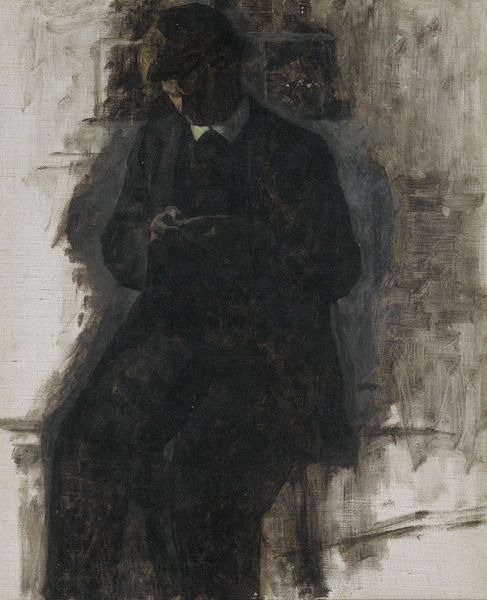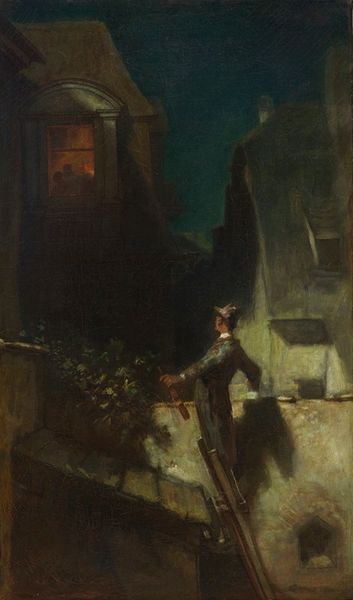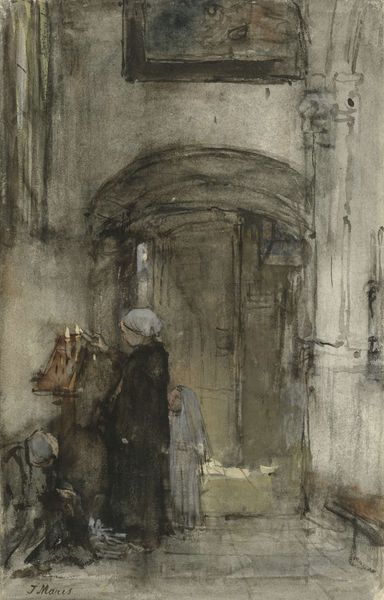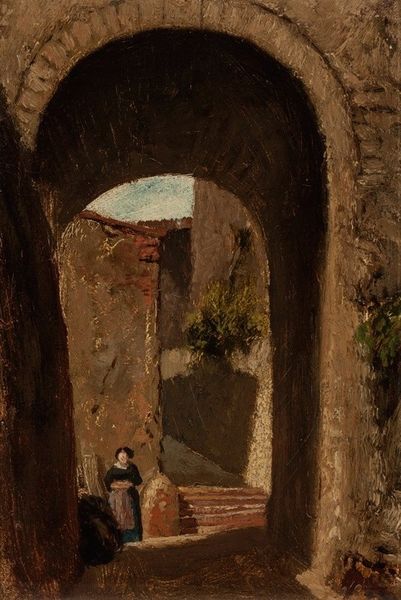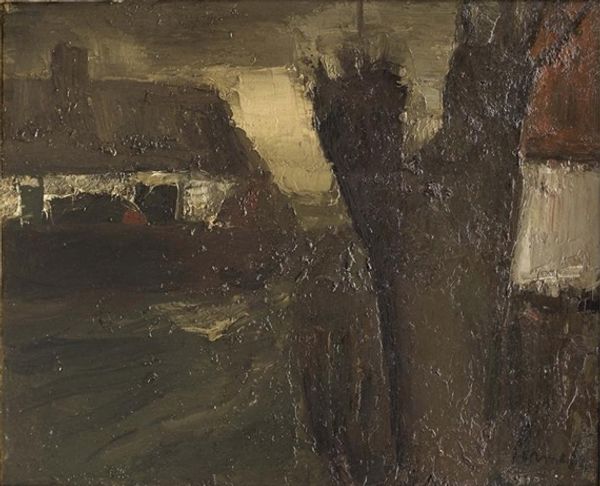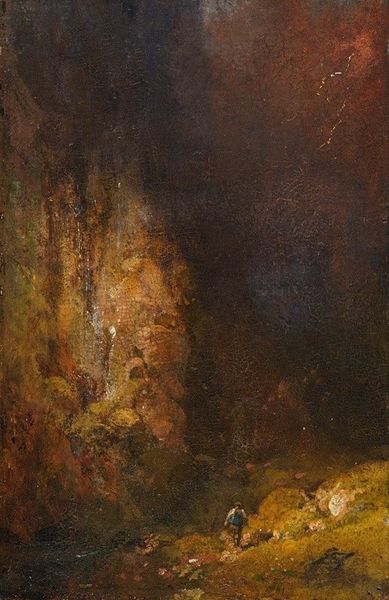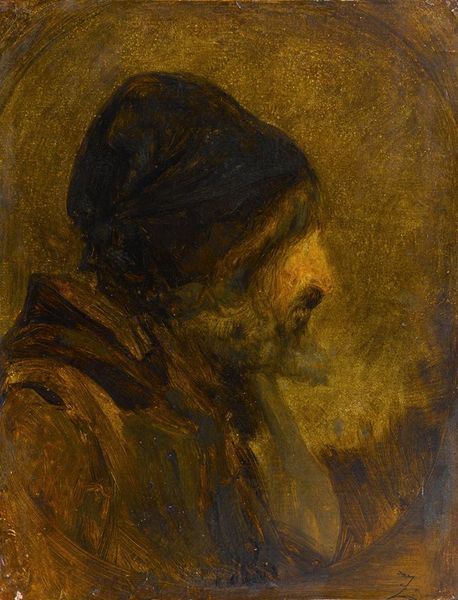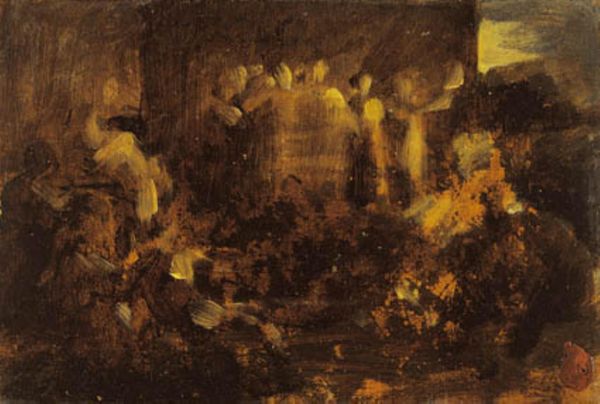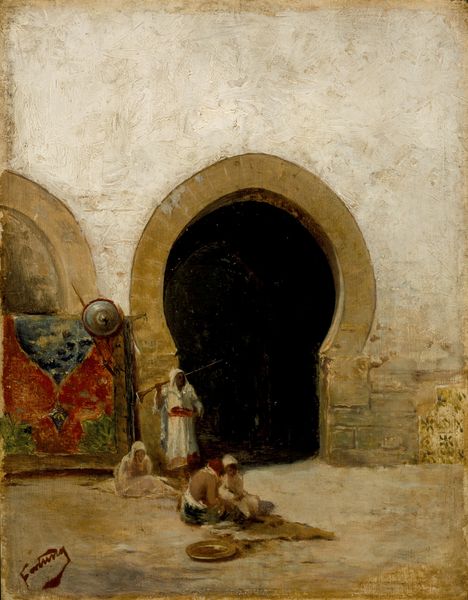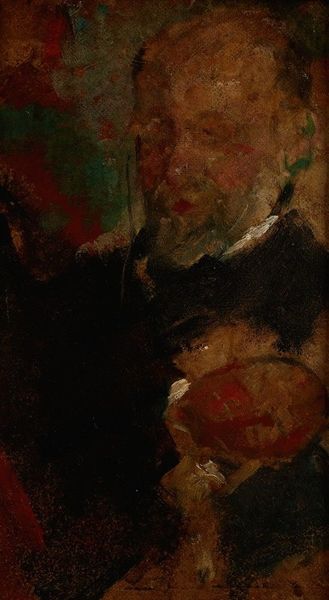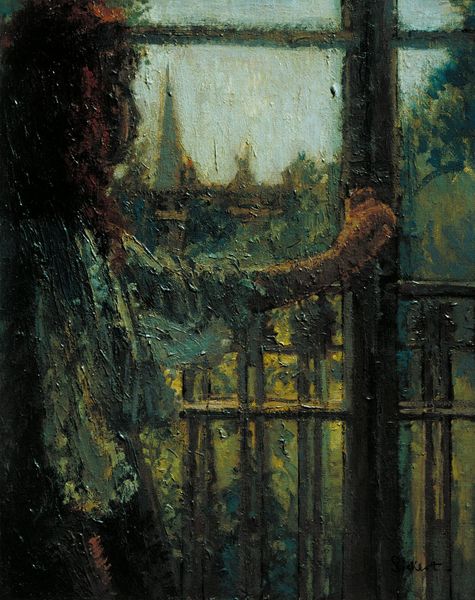
painting, oil-paint
#
figurative
#
painting
#
oil-paint
#
landscape
#
figuration
#
oil painting
#
romanticism
#
cityscape
#
genre-painting
Copyright: Public Domain: Artvee
Curator: Here we have "Gallant Scene at a River Bridge," a piece attributed to Carl Spitzweg, rendered in oil paint. It offers a glimpse into a bygone era, wouldn't you say? Editor: It certainly does. I’m struck by how the composition divides our attention. There's a woman with a fan above, almost disembodied on the bridge, and a man below, intensely isolated by the arch. A real dichotomy is being shown through their contrast of setting and form. Curator: Note the materiality of the bridge itself – the visible brushstrokes suggesting the rough texture of the aged stone. It’s very gestural work that hints at mass production given the subject matter, suggesting the painting was widely sold in the time of Spitzweg due to its ability to give an ideal sense of living at the time, given the materials available. Editor: Absolutely. The bridge, architecturally, also symbolizes a crossing, a transition. Paired with the woman and the man beneath, one could consider them representing social classes divided but still aware of each other. The fan is interesting; historically it could indicate coquetry, perhaps hidden desires across these divides. Curator: That divide you mention seems crucial when thinking about labor. The construction of that stone bridge – someone quarried, transported, and laid each stone. The painting idealizes leisure without directly acknowledging the effort inherent in that scene, especially as the cityscape became more present for daily laborers in the 19th century. Editor: Precisely, but the symbols still subtly reinforce that awareness. The archway the man stands in could also be a symbolic opening— or an obstruction. Is it a journey about to begin or one that is stifled by structure, much like the social structure? Curator: The small format also draws my interest: was it meant to democratize image? To be reproduced and consumed on a mass level? It poses an interesting question about artistic accessibility and ownership. Editor: Agreed. It reminds me that the symbols continue to speak across generations if one only slows to interpret their silent stories, like faint echoes on that timeless bridge.
Comments
No comments
Be the first to comment and join the conversation on the ultimate creative platform.
